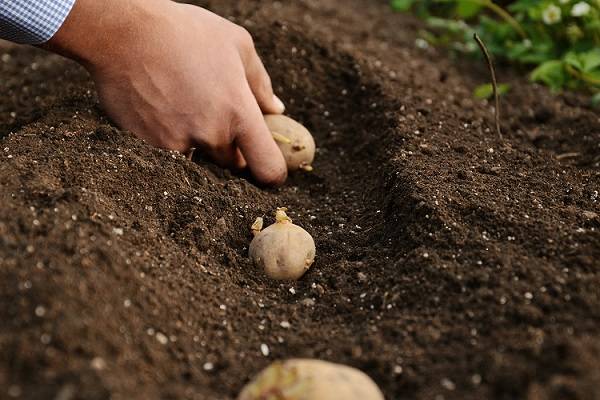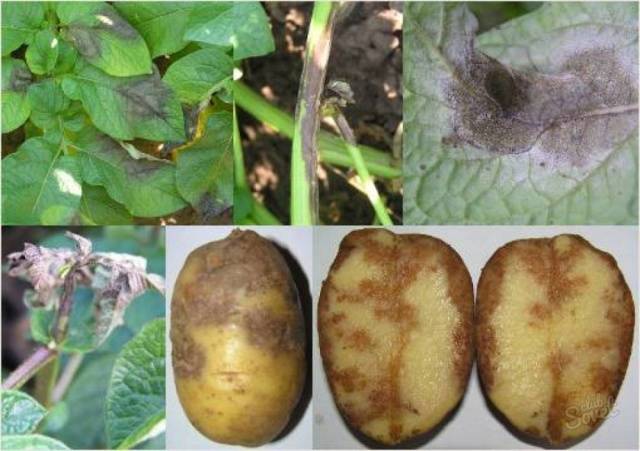Content
In Russia they love potatoes, crumbly, with garlic and onions, with meat and cabbage; not a single main dish is complete without potatoes. Many varieties of this root vegetable have been bred by Russian breeders, each better than the other. The hero of our story, the potato variety Gulliver, is one of the best representatives of the varieties bred and zoned in different regions of our vast country.
Origin story
In November 2015, the originators of the Gulliver potato variety (Lorch Research Institute and Korenevo Agrocenter in the Moscow region) submitted an application for inclusion of a new variety in the State Register catalog, and in 2018 the variety was officially registered and approved for sale, so it can be freely purchased from distribution companies on the territory of Russia and other countries.
Description and characteristics
According to the characteristics stated by the originators, the Gulliver potato variety has the following qualities:
- potatoes Gulliver early ripening, the first harvest is dug up on the 45th day after planting, table variety;
- potato bushes are tall, lodging, the leaves are large, rich green, the corolla of flowers is medium-sized with a weak anthocyanin color;
- the average yield varies from 160 to 290 centners per hectare (the yield record was 371 centners/ha);
- Gulliver's root crop has the shape of an elongated oval, the eyes are small, the peel is earthy-beige, the flesh is creamy, the average weight of one tuber is from 100 to 140 grams;
- the starch content indicator reaches 15%;
- yield of marketable root crops up to 98%, storage safety 95%;
- the taste is good and excellent;
- The Gulliver variety is resistant to potato cancer and golden nematode, weak resistance to late blight on tubers and average resistance to tops, quite resistant to potato mosaics: wrinkled and striped.
Advantages and disadvantages
It is too early to talk about the pros and cons of the Gulliver potato variety; it has not yet become widespread enough. According to some reviews from vegetable growers posted on forums, they note the following advantages of Gulliver potatoes:
- large tubers of excellent presentation;
- ease of care;
- resistance to many potato diseases;
- high degree of transportability.
Potato growers are dissatisfied with the low level of preservation during storage; many Gulliver tubers dry out or rot before spring.
Landing
Gulliver potatoes are planted in the same way as any other variety of these root crops. Many gardeners who have been growing potatoes for many years know how to do this correctly, but for novice potato growers this process becomes a big problem.Having no experience in planting and growing potatoes, they make many mistakes that can be avoided if they approach the matter correctly. In the table, we noted quite common mistakes made by beginning gardeners, indicated their undesirable consequences, and answered the question: how to do it right?
You can't do that | Why | How to do it right |
On a plot with a slope, rows of potatoes are planted along the slope | Natural moisture quickly flows down, plantings do not receive enough water | Potato rows are always planted across the slope |
Tubers are planted too deep or not deep enough | New root crops are poorly formed, will be small, and when planted superficially, the tops will grow rapidly | The optimal depth for planting potatoes is no more and no less than 15-20 cm |
There is too little or too much space between rows and plants | Dense plantings prevent the bushes from ventilating, and sparse plantings lead to rapid drying out of the soil | The distance between rows should be 50-60 cm, between bushes 35-50 cm |
Fresh manure was applied before planting | Root crops overfed with nitrogen fertilizers will actively increase green mass, but not tubers | Organic fertilizers should be applied in the fall or rotted manure should be used in the spring, adding 1 bucket per 2 square meters. m before landing |
Large tubers were used for planting | Large root crops, as seed material, will produce small new tubers | It is better to plant potatoes of medium or small size; large potatoes are cut into several parts, leaving 2-3 eyes on each |
The seed material is not germinated | The growth and formation of new tubers is delayed for 2-3 weeks | Potatoes are removed from the cellars 1-2 months before planting and placed in a warmer and brighter room |
Potatoes were not treated with fungicides before planting | Plantings are at risk of fungal diseases | 2 hours before planting, spray the seed with solutions of copper sulfate or other special means against diseases and pests |
Care
After planting potatoes until the first shoots appear, no care is required for the plantation. After 2-3 weeks, the Gulliver variety produces the first friendly shoots, and after another week it is necessary to carry out the first hilling.
Hilling and feeding
It will be quite easy to care for Gulliver potato plantings if you have a mechanized tool for hilling; if you don’t have such a device, then use a regular hoe. The soil between the rows is loosened and raked up to the bushes almost to the very top leaves.
The first feeding of Gulliver potatoes is carried out before the onset of the second hilling, that is, after flowering, at the same time it is necessary to spray the rising bushes from the hated pest - the Colorado potato beetle. There are a huge number of chemicals available to combat it; you just have to choose the most effective one.
Diseases and pests
The Gulliver variety, as mentioned earlier, has increased immunity to many potato diseases, but can be susceptible to other fungal and viral diseases such as late blight, scab or formosa.The main pests that feed on potato tubers are wireworms, and the leaves and flowers are eaten by the Colorado potato beetle.
Signs of diseases and treatment
- Late blight on potatoes.
Signs: appear after the end of flowering, brown spots form on the leaves of the tops, fungal spores live on the back side of the leaf blade, in rainy weather they fall into the soil and infect root crops.
Treatment: planting only healthy seed material, hilling up to 3 times per season, treating bushes with Bordeaux mixture and preparations containing copper. - Scab on potatoes.
Signs: Tubers are affected, ulcers and growths appear on them, the peel cracks, forming dark brown scales, and on the stems of the tops the fungal spores form a gray oily coating.
Treatment: plots for potatoes must be alternated with other vegetable crops every 3-4 years, plant uninfected tubers, hill up 2-3 times during the entire growing season, treat seed material with copper sulfate before planting, and carefully discard diseased seeds. - Fomoz on potatoes.
Signs: Root crops and stems are affected, dark elongated spots appear on them, over time, the potato pulp dries out and rots in this place, the stems and petioles of the tops also become covered with elongated brown spots, this can be noticed during potato flowering.
Treatment: disinfection of the soil before planting with Trichoderm, use healthy planting material, loosening and hilling, mandatory removal of tops before harvesting to prevent infection of tubers.
Fighting wireworms:
- digging up the soil on a potato plot in late autumn or early spring to destroy beetle larvae;
- regularly reduce soil acidity by adding dolomite or lime;
- treatment of plantings with solutions of chemicals: Tubershield, Prestige, Provotox.
Gulliver potatoes are an early variety; the first trial digging of tubers begins at the end of June; at the beginning and until mid-July, the tubers are ready for the main harvest.
Conclusion
The Gulliver variety has not yet gained sufficient popularity among potato growers, since it is super new and was registered at the beginning of 2018, but according to the reviews of those gardeners who tested it on their plots, it is worthy of the highest rating. We recommend that you try Gulliver potatoes, because already in the middle of summer you will have a new harvest of your own potatoes.














